Wheels in Kona
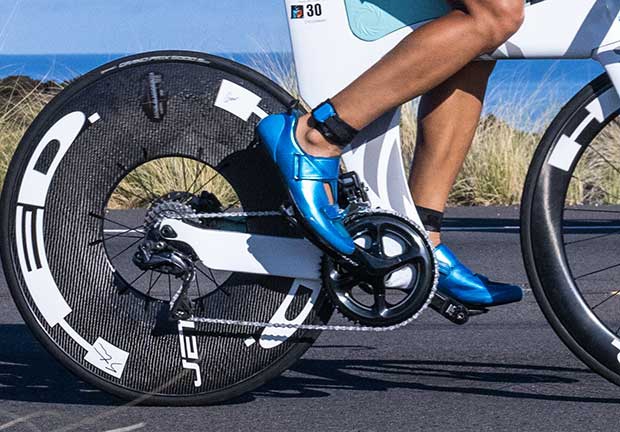
Here’s one misconception I wish we could’ve cured at the Hawaiian IRONMAN World Championships last month: Disc wheels on the back of the bike are not dangerous. We added some data to that thesis because 5 men and 4 women rode a new HED Jet 180 on the rear apparently without mishap. One of those aboard that wheel (Sam Laidlow) set the new bike course record. But that new record was as much a feature of the fickle Kona weather as of the tech and the talent. Low wind means high performance, and the ultimate proof of a deep wheel on that course will be on a windier day.
I felt that Switzerland as a wheelmaking country had a good Kona. The top 5 women in the pro race were all on DT Swiss wheels (1st, 2nd, 3rd); the 4th and 5th finishers rode Swiss Side; and the two companies share technology to a degree. These brands are either really good at picking winners or really good at producing fast wheels or both. DT Swiss did pretty well in the men’s race as well, with 4th and 10th.
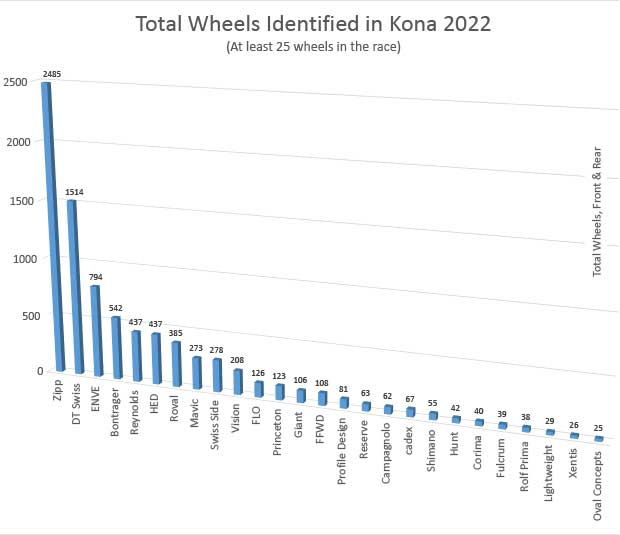
HED was one big winner in the men’s race, with 2nd, 7th and 8th, pretty good when you consider that the brand was #6 (tied with Reynolds) in the wheel count. But then HED always has been a popular choice of pros and remains so now, either because of sponsorships, because pros like the wheel, or both. The most prolific wheel brand use among the pros was DT Swiss, with 34 wheels that I could identify in the pro racks, followed by HED with 26 and Zipp with 21. Then it was CADEX (the other men’s “winner”) and Swiss Side with 14 wheels each.
I found the following interesting. Among wheels brands that had at least 50 wheels in the age group race, here are the brands that showed up a lot more often in Kona’s first race, which was primarily populated by women: Bontrager, Reynolds, Vision, Giant, Profile Design, CADEX, Shimano. Wheels that predominated on Day-2 were DT Swiss, HED, Swiss Side, Princeton Wheelworks, Campagnolo. Other wheel brands, like Zipp, ENVE, Mavic, FLO, Reserve did not show a marked difference in use between the races.
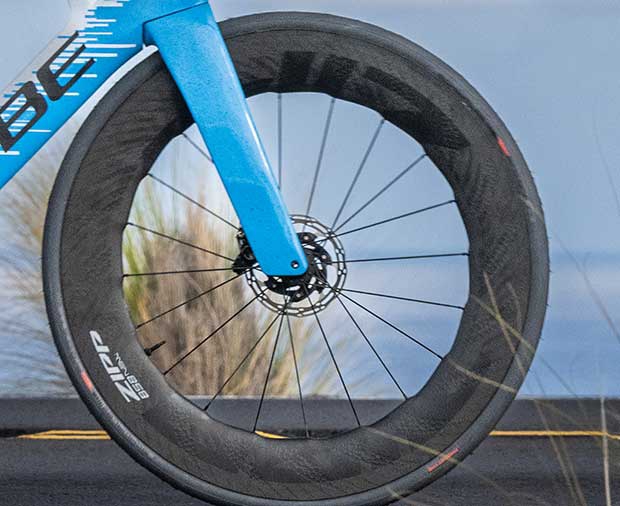
I may be torturing a conclusion from spurious data but here’s what jumped out at me: Women are more prone to ride the bike with the OE wheel, or they’re riding a legacy wheel; men are more likely to ride with a newer aftermarket wheelset. (There were some exceptions to that tendency.) I have some suspicions about why this is so, but first I'd like to make sure that it is so. I'll keep my guesses to myself until i have more data.
Obviously the biggest overall winner in Kona was Zipp. They continue to dominate the wheel count with legacy wheels and new, OE plus aftermarket, Zipp just operates on all cylinders. One of the cleanest, best set ups in the race was the Schwalbe prototype tire (a new Pro One TT, but Schwalbe won’t confirm that) in a 28mm width mounted on a newly launched Zipp 858 front and rear. This was a nice match, Sebastian Kienle was on this as well as Florian Angert (he, or at least his front wheel and tire, and pictured in the image above). To me, this is one combo of the future. It has it all: Aerodynamics, handling, comfort, speed, flat resistance. I also felt that CADEX made a splash. It’s a new wheel brand, only recently out with good aero wheels and with supply chain problems I’m surprised it found a way to get 67 wheels in the race. It also, by the way, was ridden by the 1st and 3rd place finishers in the men’s race; and it just “won” the 70.3 Worlds in St. George in the men’s race.
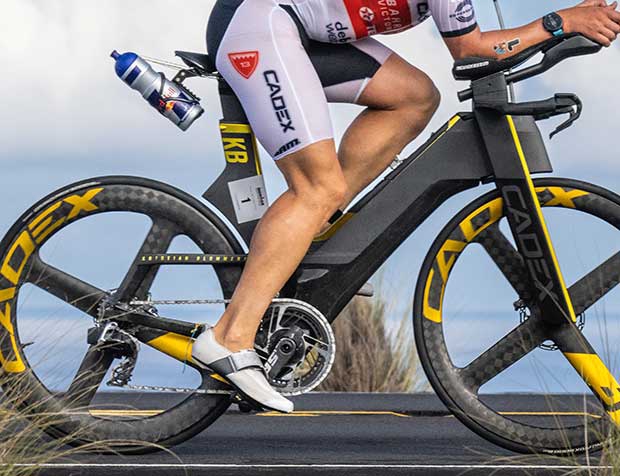
Hayes (known for disc brakes) bought Reynolds Composites 4 years ago and while Reynolds still ranks high in the wheel count, that is I guess my definition of a “legacy” product: a brand that remains high in the count, but without new products purchased by contestants. I say this because it seems to me Hayes uses its Reynolds brand for products that don’t anymore include tri or TT products. I didn’t see any Reynolds wheels in the pro race. I write this while acknowledging Reynolds makes and sells an 80mm wheelset. And, inexplicably, Reynolds remains pretty high in the count year over year. I just don't know what to make of this brand.
I think there were more really deep front wheels in the pro race (70mm or deeper) than in the AG race and that makes sense. I wouldn't race an 80mm front wheel in Kona. But these pros are good at handling deep fronts in winds. Leon Chevalier (7th overall, interview with him published here today) was the only pro man in the top-10 not riding a 4-spoke or a 80mm or deeper front wheel (he was on a HED Vanquish 6). At least half the top-10 in the women's field were riding 50mm front wheels or shallower. It makes sense for lighter riders to scale the wheel depth to overall weight of the system.
But (not to belabor) that didn't keep the women from riding deep rears including the HED Jet 180. Kona has 2 dumb rules in my opinion. The first is the disallowance of a disc in the rear; the second is the lack of a rule on max depth (100mm, for example) of the front wheel. You could, by the rules, run that HED 180 on the front in Kona. That's a fine idea in some race somewhere; it would be a bad idea at this race.


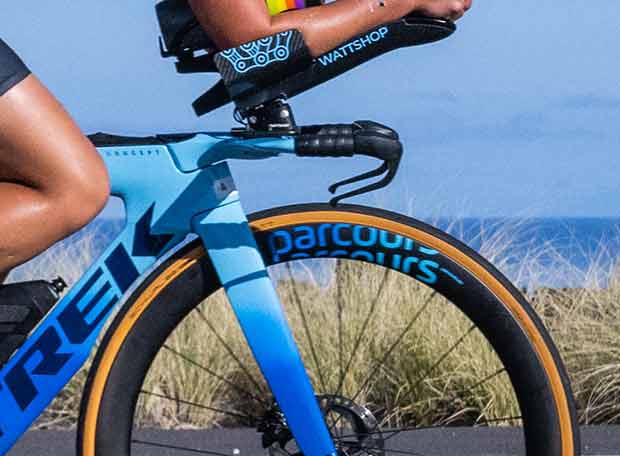
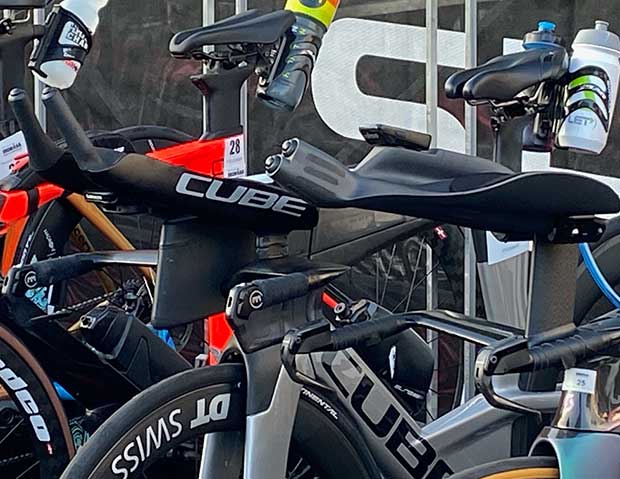
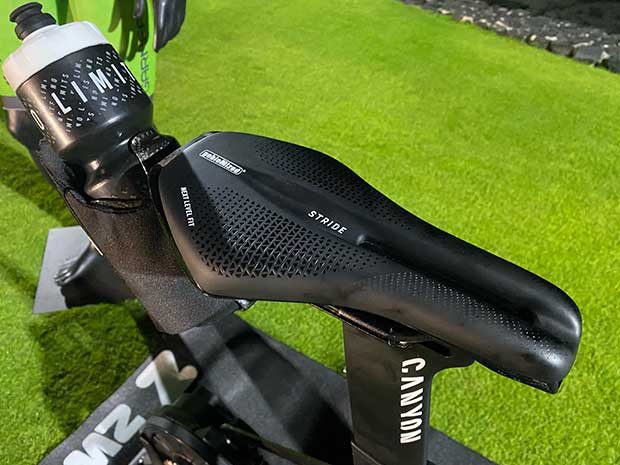
Start the discussion at slowtwitch.northend.network